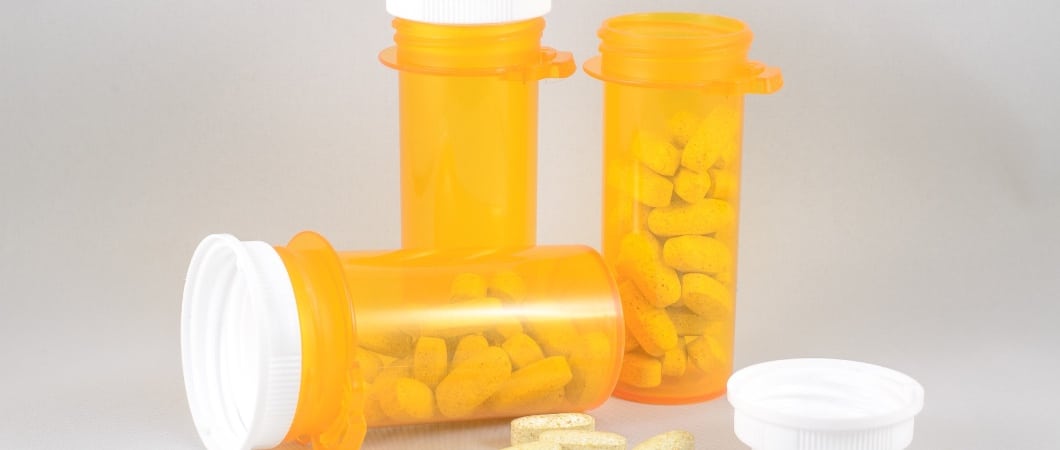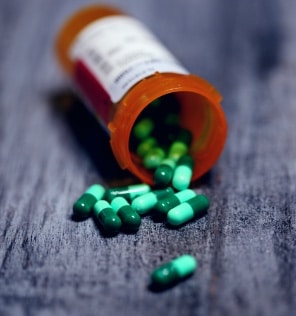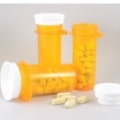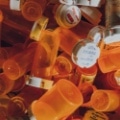To ensure customers have the right information, FDA label requirements for pharmaceutical products are extremely strict and often require specific steps regulated by the FDA.
Since the 1970's War on Drugs movement, which targeted drug reformation, the government has enforced specified requirements for the legal manufacturing and distribution of drug products.
This FDA label guide will ensure you're using the proper process for labeling pharmaceutical products to keep consumers safe.
Primarily, we'll discuss the critical requirements and information needed for FDA drug labels, but we'll also dive into which products require labeling, what to look for when selecting labels, best practices for labeling pharmaceutical products, and what FDA regulations require that all medication labels include.

Which Products Need An FDA Drug Label?
The FDA requires pharmaceutical labels on all retail items containing any kind of drugs, including both prescription and OTC (over-the-counter) drugs. Surprisingly, this also includes products you wouldn't typically regard as relevant. For instance, hand sanitizer, sunscreen, rubbing alcohol and anti-cavity toothpaste all require pharmaceutical labeling.
It's crucial to recognize what kind of ingredients are contained within your products so you can effectively comply with the requirements for FDA drug labels.
What Should You Look For In FDA Drug Labels?
The FDA requires sturdy labels that must stay in position on the case and maintain legibility throughout their lifespan (manufacturing, delivery, storage and further use).
Also, machines that print labels onto plastic materials sometimes cause wearing or smearing and are thus ruled insufficient. Manufacturers must ensure that the user can easily decipher the information printed onto an FDA drug label throughout the product's full duration — or up until the expiration date.
Additionally, look for labels that are UV light- and water-resistant and have a secure adhesive.
Once you've produced a label, designated individuals must proofread and accept samples before dispensing. All labeling and packaging materials—including inserts, pre-printed packaging materials and pre-printed containers—must be inspected and approved to comply with FDA requirements.

What Is the Required Information for FDA Drug Labels?
Over the past two decades, guidelines have become more transparent and concise regarding the legibility and placement of details for drug product packaging. Before these guidelines, it was very difficult for customers to spot important information, such as side effects, warnings, and dosages.
The FDA discovered this to be a significant issue, particularly among older people. The elderly account for approximately 30% of OTC medicine sales. FDA label requirements were officially set up in 2002, with just a few recent updates since then.
Thanks to these specified guidelines, FDA drug label and information formatting have become standardized, making product information and pharmaceutical packaging easier to understand.
FDA regulations require that all medication labels include:
- Name of Product
- Table of Drug Facts
- Active Ingredients
- Proper Use and Purpose
- Warnings
- Directions
- Allergic Reactions/Harmful Side Effects
- Inactive Ingredients
Labeling information must be formatted in this exact order.
Additionally, the FDA label guide requires all products containing drugs to:
- Be FDA registered
- Feature a National Drug Code, or NDC (read over the guidance document at FDA.gov)
- Include a printed NDC code with three sections on the label's front
The Table of OTC Drug Facts: A Breakdown
To prevent misunderstandings and produce clear, concise data, the FDA demands that all products with pharmaceutical labels contain a table of Drug Facts. Similar to the labels featuring Nutrition Facts on food products, this table includes various components of basic information, such as:
- Directions: How do I take this medicine?
- This section works as a sort of medication guide for patients.
- Uses: What does this medicine intend to treat?
- Active Ingredients: What drugs are in this product, and what is the amount per dosage?
- Inactive ingredients: Does this product include ingredients that aren't medicine?
- Warnings: As with most products, the "Warnings" section is split into multiple statements.
- The FDA states that a "Keep Out of Reach of Children" warning must be on nearly all drug products. However, a select few harmless products—like cosmetics that include sunscreen—are not required to do so.
- Except if recommended by a doctor, drug products must feature a "Do Not Use" statement. Manufacturers should also include information related to pregnancy or lactation (see FDA.gov's PLLR guidelines).
- This label isn't required for non-prescription products
- Products must have a "When Using This Product" statement to address side effects and interactions with other drugs.
- If there are signs of toxicity or potentially harmful side effects, "Stop and Ask a Doctor If" warnings are advised. In the same regard, a product should include a "Stop Using If" statement for undesirable symptoms that tell the consumer they should immediately discontinue use.
- The "Ask a Doctor or Pharmacist" or "Ask a Doctor" statement informs users when they should seek professional medical guidance before using the drug.
- Other Information: Lastly, this section covers additional information that may be informative to those reading the FDA drug label.
- Manufacturers should list techniques regarding tamper protection. This helps reassure the user that the manufacturer is taking the proper steps to ensure their safety and security.
- Also, it's wise to list instructions regarding adequate storage.
Correctly Labelling Pharmaceutical Products
Manufacturers have the option of including a "Questions?" or "Comments" section at the bottom of FDA drug labels.
If users have questions about the drug, this portion informs the user how to contact the manufacturer. This can also help avoid potential misunderstandings regarding the information contained on the label.
Trust LLT For Your FDA Drug Labels
Now that you know what FDA regulations require that all medication labels include, you understand the importance of getting it just right. LLT has experience providing many different types of medical labels with adhesives that meet FDA label requirements. If you're a manufacturer, count on LLT for your FDA drug labels.



